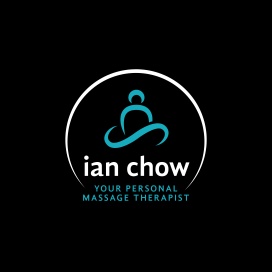By Ian Chow, Certified Massage Therapist / Infant Massage Instructor / Oncology Massage Trainer
Length: 4 mins read (862 words)
If you do enjoy reading the content of this blog, please do consider in buying me a cup of coffee by clicking here.
Not many of us are aware how postural issue(s) could potentially affect a vocalist singing quality. Besides all the various lower back muscles; the diaphragm, abdominal muscles, certain thigh muscles and the gluteus maximus (our largest muscle in our body) all play a very crucial role in maintaining a good posture. As one may already know, it is always very important for any vocalist to be “grounded” with adequate support. On the other hand, to understand the anatomy of the voice, please feel free to read this comprehensive article written on SingWise. https://www.singwise.com/articles/anatomy-of-the-voice
The way the muscle fibres work together and pull (in the direction as per diagramme below) are what ensures good posture which subsequently gives us the needed grounding. Any restriction on any of these muscles could have an adverse effect. Having a dysfunction on any one of these areas will affect our posture. Most times, a vocalist may just complain on having lower back soreness but for me, this could be the start of a bigger problem and all the relevant muscles / areas as below must be addressed to ensure a comprehensive treatment.

Meanwhile, erector spinae is the main muscle that enables us to flex and extend our back. They too maintain our posture when walking. This muscle practically pull us up posteriorly, working as the counter to gluteus maximus and hamstring (a group of 3 muscles). Releasing the tension in this muscle alone can provide quite a relieve to anyone with lower back issue. Then, the curvature of the lumbar spine known as lordosis supports the weight of our abdomen / chest area.
What I commonly noticed on a lot of performers (not necessarily vocalist) are the issue of muscles “compensation” where one part of our body is used and adapted to a misaligned musculoskeletal movement pattern. This will prove to be an issue if it involves our lesser dominant side where the muscles can get fatigue much faster (and have effect thereafter). Depending on the discipline of the performing arts that they are doing, one may exhibit certain dysfunctions more prominently but that is another topic on its own.
Coming back to this topic, one other major and deep muscle that I will always work on especially for vocalist is quadratus lumborum (with insertion on L1 to L5 and 12th rib to our iliac crest). This muscle not only enables us to flex our back laterally (side bending) but it is the one responsible when we do “force” exhalation (in the singer context, we will tend to engage this muscle especially when we are singing the last note of a phrase, finishing our breathe).
If you still can’t picture it, just squat, put your hand at the back and say out loud “hey, hey!!!!”. Do you feel there is a muscle at that area that pushing your hand out? That is the muscle. I once had a client jokingly said to me, “I feel you are touching and massaging my kidney.”
The gluteal muscle (particularly gluteus maximus) is another prime area that must be tackled. Many therapists avoid this area or just address it briefly. If this area is dealt with properly, we could also one shot look into potential hip rotation dysfunction (not to mention, piriformis syndrome). Plus, there are also a few key ligaments that connect from our lumbar to iliac crest (hip bone) to the sacrum that should be checked out, to iron out other lower back problems. As a receiver, this area is not painful but it has a constant dull soreness.
Not widely practice, I do choose to work on the vocalist diaphragm and some massage techniques that I use can be a bit uncomfortable. We cannot control our diaphragm muscle voluntarily but if it is tight, its function in contracting and expanding during inhalation/exhalation process could pose to be an issue. Furthermore, we may not be able to have the air capacity that we need to hold a certain note. The two posterior tendinous crus (the tether for the diaphragm contraction) arises from L1 to L3 are worked on when we are massaging the erector spinae muscle (subjected that it is done with a deeper pressure on the area where these crus are inserted).
Similarly, the massage on the 4 main abdominal muscles (including our “6 packs” rectus abdominis) can be somewhat uncomfortable especially if you do have other problems eg indigestion, gastric etc. This group of muscles, looking at the diagramme, strengthen our posture in all the directions, anterior wise. For the abdominal muscles, I will also incorporate acupressure technique on CV12 (correspond to solar plexus chakra) which said to address various digestive issues including pain, bloating, reflux, vomiting and diarrhea.
In summary, the root cause for bad posture can be more complex than it seems and not just confine to lower back muscles. It’s always good to examine and work on all the relevant areas that are connected to ensure a wholesome treatment; and not forgetting, a good vocal quality.
Before: What Is Sports Massage?



